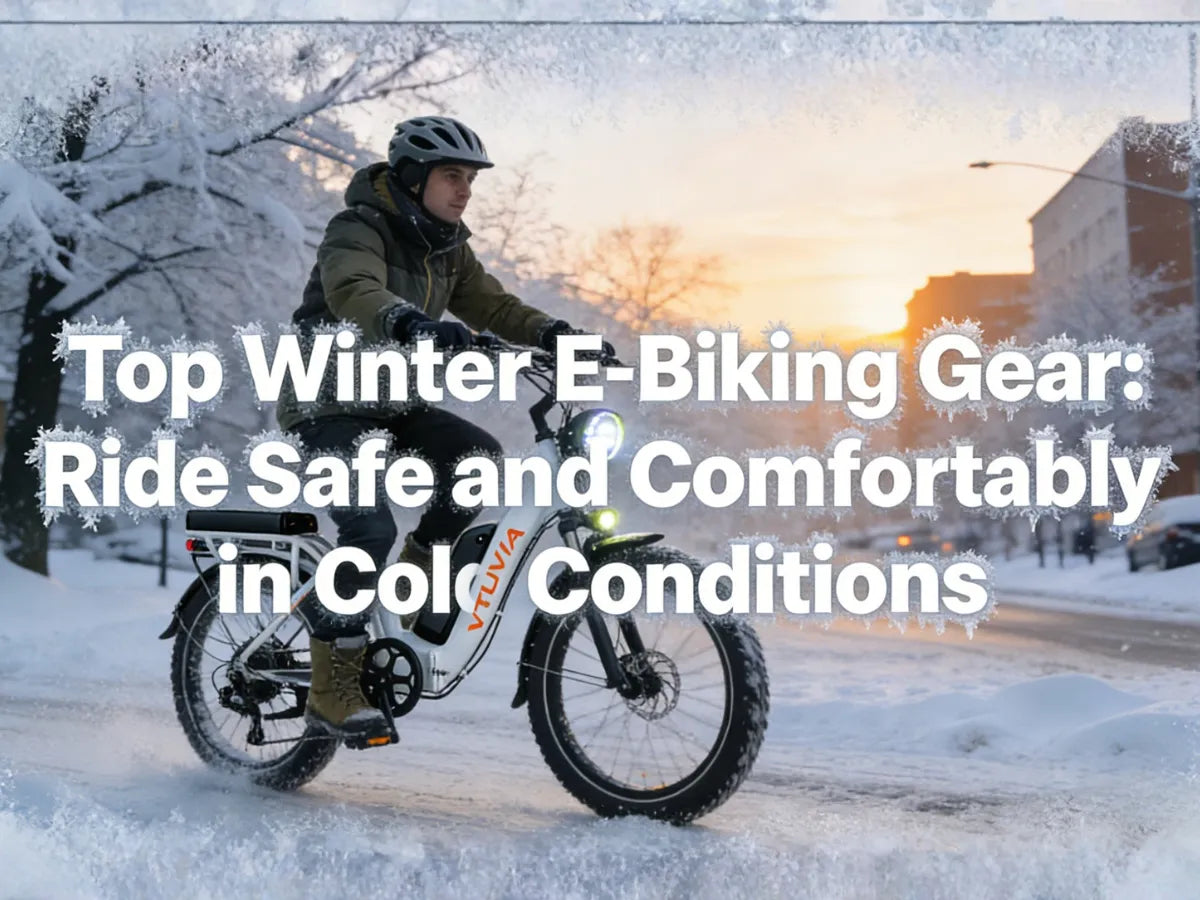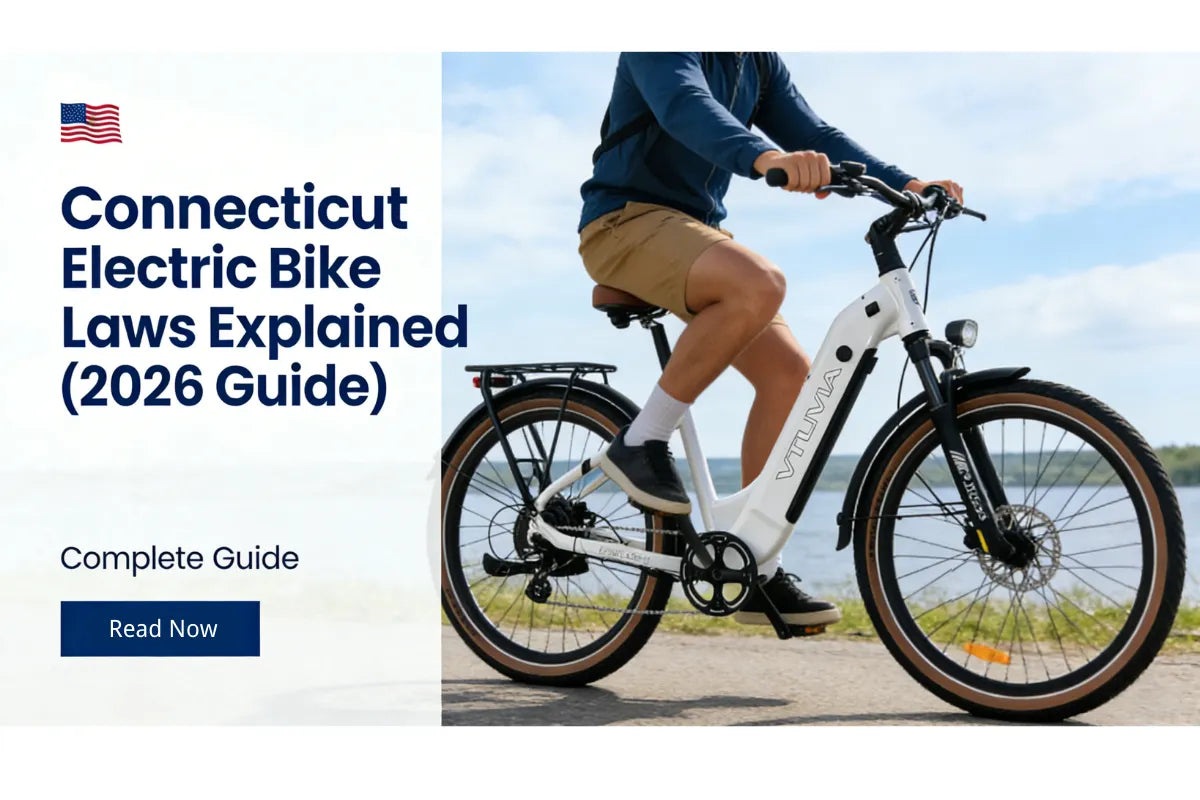The Ultimate Guide to Waterproof Electric Bikes: Riding, Safety, and Maintenanc
Introduction
Electric bikes have surged in popularity worldwide, particularly in regions with frequent rain, such as Northern Europe. With their convenience and eco-friendliness, riders want to enjoy e-biking year-round. But how safe is riding in wet conditions? How do you protect your bike? And what does “waterproof” really mean?
In this guide, we explain the meaning of water-resistant vs waterproof e-bikes, provide clear guidance for safe rainy-weather riding, maintenance tips, and show which models are best suited for wet conditions. By the end, you’ll know exactly how to ride confidently in the rain without risking damage.
Understanding Waterproof and Water-Resistant E-Bikes
Waterproof vs Water-Resistant: What’s the Difference?
It’s easy to confuse “waterproof” with “water-resistant.” Here’s the key difference:
- Water-Resistant: Designed to handle splashes, light rain, or road spray. It reduces the risk of water damage but cannot survive full immersion.
- Waterproof: Can withstand submersion to a certain depth and duration (depending on the rating). These e-bikes provide maximum protection for wet-weather conditions.
Tip: Most e-bikes on the market are water-resistant rather than fully waterproof.
IP Ratings Explained
Electric bikes use IP (Ingress Protection) ratings to indicate water and dust resistance. These ratings help you understand the bike's limits:
- Format: IPXY, where X = dust protection, Y = water protection.
- Example: IP54 means dust-protected and resistant to splashes of water.
- Higher numbers mean better protection.
Common E-Bike Component Ratings
Each component may have its own rating:
- Motor: IP65–IP67 for rain and puddle protection
- Battery: IP67–IP68 for temporary immersion
- Display: IP54–IP65 to protect electronics from spray and light rain
Water Resistance Ratings: Quick Reference
| Rating | Protection Level | Real-World Example | Safe for Riding? |
|---|---|---|---|
| IPX0 | No protection | Avoid any water | ❌ Unsafe |
| IPX1 | Drips from above | Light drizzle | ❌ Not suitable |
| IPX3 | Spray at an angle | Light rain or mist | ⚠️ Only emergency riding |
| IPX4 | Splash protection | Moderate rain | ✅ Okay for everyday rain |
| IPX5 | Water jets | Heavy rain, puddles | ✅ Good for wet weather |
| IPX6 | Powerful water jets | Very heavy rain, roadside spray | ✅ Excellent |
| IPX7 | Temporary immersion (1m) | Shallow puddles | ✅ Best protection |
| IPX8 | Continuous immersion | Deep water | ✅ Maximum protection |
Tip: Always check the IP rating of individual components, not just the bike as a whole. This helps you understand which parts need extra care.
Can You Ride an Electric Bike in the Rain?
Safe Wet-Weather Riding Guidelines
- Light rain: generally safe for all water-resistant bikes
- Moderate to heavy rain: slow down, brake earlier, and watch for road hazards
- Avoid riding through deep puddles, floods, or high-pressure water streams
- Example: commuting in a wet city requires attention to painted lines and slick surfaces
Road Hazards in Wet Conditions
- Slippery roads from leaves, painted lines, or metal grates
- Reduced visibility: fog, rain on glasses, headlight glare
- Wear reflective clothing, bright lights, and non-slip footwear
Expert Recommendations
Manufacturers suggest:
- IP rating thresholds: IPX4 minimum for moderate rain, IPX6+ for heavy rain
- Limit rides in torrential rain or flooded areas
- Inspect seals and components after wet rides
Protecting Your E-Bike from Water Damage
During the Ride
- Install mudguards/fenders to reduce spray
- Ride slower, brake earlier, avoid sharp turns
- Never submerge your bike
After the Ride
- Wipe down frame, battery terminals, and connectors
- Dry the display, motor, and wiring carefully
- Use soft brushes, microfiber cloths, and bike-safe detergents
Storage Recommendations
- Indoor storage preferred; waterproof cover if left outside
- Seasonal considerations: winter or heavy rain months
- Ensure battery is fully dry before charging
Recommended Waterproof/Water-Resistant E-Bikes
1. VTUVIA LT7

Rating: Motor & Battery IP67. Perfect for urban commuting in rain or shallow puddles. Durable frame and smooth pedaling even on wet streets.
Add to Cart
2. VTUVIA XT8

Rating: Motor IPX6, Battery IPX7. Step-through frame for easy mounting, robust braking system, ideal for daily wet-weather rides.
Add to Cart3. VTUVIA SF20H

Rating: Moderate water resistance (IPX5). Lightweight and foldable, suitable for occasional rain; avoid full immersion.
Add to Cart4. GEMINI Fat-Tire E-Bike

Rating: IPX5. Fat tires for slippery terrains, suitable for off-road wet conditions and heavy rain commutes.
Add to CartMaintenance Tips for Longevity
Routine Care
- Lubricate chain, gears, and pivot points after wet rides
- Check seals and gaskets for wear or damage
- Battery care: avoid charging wet batteries, store in dry conditions
Advanced Tips
- Use dielectric grease on connectors to prevent corrosion
- Protective sprays for frame and cables
- Winterize for snowy or extremely rainy conditions
Debunking Common Myths About Waterproof E-Bikes
- Myth 1: “Waterproof = ride through floods” – IP ratings only cover limited immersion, not moving flood water.
- Myth 2: “All e-bikes are waterproof” – Most are water-resistant; check IP rating.
- Myth 3: “Rain won’t harm mechanical parts” – Brakes, tires, and chains still need attention.
Beginner’s Checklist for Wet Conditions
- Before riding: IP rating check, battery full, brakes, lights
- During ride: rain gear, avoid puddles, moderate speed, high visibility
- After ride: wipe down, dry battery/display, store indoors
Tools & Accessories for Wet-Weather E-Biking
- Mudguards/fenders
- Waterproof battery/display covers
- Reflective jackets, waterproof shoes
- Cleaning kit: microfiber cloths, soft brushes, bike-safe detergents
The Future of Waterproof E-Bikes
- Fully sealed motors and advanced protective coatings
- Smart sensors to detect water ingress and alert riders
- Integration with urban rain-friendly bike infrastructure
FAQs
- Can e-bikes be submerged in water? No. Even IPX7 bikes can handle puddles but not continuous immersion while moving. Flooded streets can damage electronics and void warranties.
- Can I hose down my e-bike? Avoid high-pressure water. Use soft brushes and sponges with gentle cleaning solutions to prevent water seeping into connectors and motors.
- Can electric bikes get wet? Rain and road spray are fine for water-resistant bikes. Avoid leaving bikes outside in heavy storms or riding through deep water.
- How do IP ratings translate to real-world conditions? IPX4 = moderate rain okay, IPX5 = heavy rain safe, IPX6+ = intense rain and roadside spray, IPX7 = puddles and temporary submersion, IPX8 = deeper water immersion.
Conclusion
Understanding the difference between water-resistant and waterproof e-bikes, observing safe wet-weather riding practices, and maintaining your bike properly ensures years of reliable riding. Check IP ratings, protect vulnerable components, and consider top-rated models like LT7, XT8, SF20H, and GEMINI for your rainy-day adventures.





Share:
VTUVIA Zeal XT8 Review – Best Step-Through Long Range Electric Bike of 2025
How Long Do E-Bike Batteries Last? The Definitive Guide to Range and Lifespan